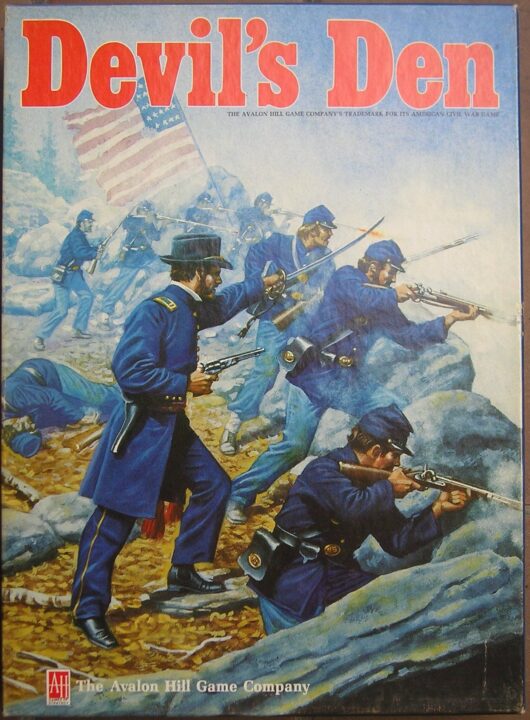Gather ’round, board game fanatics and cardboard wizards! Today, I bring you my honest review of Devil’s Den. After several nights of heated arguments, sneaky side-eyes, and maybe too much cheese dip, I can finally say I’ve put this game through its paces. If you’re thinking about dropping your hard-earned cash on something new for game night, settle in—I’ve got all the juicy details you need. Now, let’s see if the devil really is in the details, or just in Dave’s terrible bluffs.
How It Plays
Setting up
First, toss the board on the table (gently, unless you want to anger the real devil). Everyone grabs a different colored set of minions. Shuffle the agenda cards, deal one to each player, and keep them secret. Pile up resources, tokens, and place the big ol’ Devil’s Den in the center. Now you’re ready to start causing some trouble.
Gameplay
Turns go around the table. You move your minions into different zones, nabbing resources and blocking your friends along the way. You’ll haggle, bluff, and sometimes flat-out beg for favors—because hidden agendas mean no one trusts you (rightfully so). Special actions let you mess with your rivals or grab more power. The whole thing is a mix of strategy, sneaky deals, and side-eyes.
Winning the game
The game ends when someone triggers the final countdown—usually when a resource pile runs out or the Den itself is overrun. Everyone reveals their hidden agenda and adds up their points. Whoever has the most points (and probably the most enemies at the table) wins Devil’s Den. Winner gets bragging rights, but you’ll also probably have to bring snacks next time to make up for all that backstabbing.
Want to know more? Read our extensive strategy guide for Devil’s Den.
Gameplay Mechanics & Player Interaction in Devil’s Den: Schemes, Betrayals, and the Occasional Table Flip
When you sit down to play Devil’s Den, your friendships are not safe. I learned this the hard way when my buddy Scott turned on me faster than a hungry raccoon at a picnic. The core mechanic is a mix of tactical area control and double-crossing negotiation. You’ll spend your first turns building up your infernal lair, placing minions, and setting traps—with everyone side-eyeing each other over the cardboard flames.
The coolest part is the hidden agenda cards. Each player has a sneaky goal that turns every round into a guessing game. Can you trust the fella to your left, or is he smuggling brimstone under the board? In one game, my cousin Becky managed to convince us she was helping, right before she snatched victory with a last-minute betrayal. Classic Becky. The game rewards clever plays and social skills more than luck (thank goodness, because my dice always betray me). I love games where brains beat dice-rolling, and Devil’s Den does that pretty well.
However, sometimes the negotiation phase drags on, especially when players overthink every choice. We spent nearly ten minutes arguing about a trade, only to realize it helped the quietest player win. Oops. There’s also a bit of a snowball effect if someone gets ahead early, but sharp teamwork usually brings things back in balance. We only saw real runaway leaders when someone forgot their coffee. Still, with the right group, every twist and turn feels meaningful, not just random luck.
Speaking of meaningful, the brooding theme and snazzy components really sell the “devilish denmaster” vibe—let’s talk about theme and component quality next, because that artwork deserves a double-take!
Theme and Component Quality in Devil’s Den: Is Evil Worth the Price?
Devil’s Den is not a game for the faint of heart or the faint of shelf space. Let’s just say, you’ll notice this box even if you accidentally sit on it. The theme comes at you faster than my cat chasing a laser pointer. Whether you play as the sneaky cultist or the righteousness-fueled townsfolk, the artwork sets the stage. Dark, moody illustrations ooze from every card and token, making it look like a heavy metal concert poster from 1983.
As for the board, it’s chunky. My friend Phil called it ‘sturdy enough to stop a small meteor’—which, to be clear, we did not test. The tokens are thick, the minis actually look like what they’re meant to be, and the cards shuffle smoother than my attempts at line dancing (which is a low bar, trust me). It’s obvious they spent some money on the components, and, bless them, they didn’t cheap out on the plastic bits. When you open the box, nothing screams, ‘I belong in the dollar bin!’
The rulebook, though? Well, let’s just say you may want to keep your phone handy for rules questions. There are some odd typos and a few places where I wondered if the editor was abducted by actual demons. But, once you work out the kinks, it all makes sense. Just bring snacks while you figure it out, okay?
Overall, Devil’s Den has atmosphere that’s thicker than gravy at my aunt’s house, and the pieces feel great in your hands. Next up, I’ll spill the beans on how much your brainpower actually matters versus just rolling a lucky six—because boy, do I have thoughts.
Is Devil’s Den More Brain or Dice? The Balance of Strategy vs. Luck
Let me tell you a painful story: I once thought I’d mastered Devil’s Den. My friends feared me. I was the tycoon of the underworld with a spreadsheet in my head. Then, along came Tim, first-time player, who won (much to my horror) because he drew three lucky tokens in a row. I am not still salty, I swear.
The heart of Devil’s Den is strategy—your choices matter, and you can outplay opponents with clever maneuvers. Planning when to make alliances, when to bluff, and where to place your resources gives the game a great tactical backbone. A good player will usually do better than a bad one. Most of the time, anyway.
But luck is the noisy roommate in this den. Random event cards, dice rolls (those cursed dice), and the dreaded blind draws sometimes swing the game in odd ways. It’s not all left to Lady Luck, but she has more than just a foot in the door. The balance can be fun and unpredictable, especially with friends who love chaos. If you want zero randomness, though, you’ll have a bone to pick with this game—sometimes the best move just gets swept away by a surprise twist.
In short, Devil’s Den offers a fun tug-of-war between brains and chance. Just remember, if you lose, you can always blame the dice. Now, let’s shuffle over to how often you’ll want to revisit this den and whether your friends will keep coming back for more…
Replay Value and Game Length in Devil’s Den
Let me tell you, my group has put Devil’s Den through the wringer. If a game can’t survive five different people with five different attitudes, then it’s going straight to the shelf of “never again.” Luckily, Devil’s Den doesn’t belong there.
This game offers some real yeast for replay value, meaning it keeps rising every time we play. The hidden agenda cards—one of my favorites—change up each session, so you never know who is plotting what. The secret alliances and betrayals keep everyone on their toes, and I’ve seen friendships wobble but not fall (yet).
Game length is another thing. Average sessions run about ninety minutes, which is just long enough to plot, scheme, and maybe feel a little guilty, but not so long that you start thinking about your laundry. You can squeeze it in after dinner and still have time to debate who the real villain was. The real beauty, though, is nobody gets eliminated. Nobody’s forced to sit and watch, which is my pet peeve in some games. Devil’s Den gets it right—everyone suffers together right to the dramatic end.
Do I recommend it? The answer is, “Sign me up for the next séance, because yes, I do!” It’s not perfect, but if you want a game that’s fresh each time and doesn’t eat up your night or your patience, Devil’s Den is my go-to. Just don’t invite that one friend who always takes betrayals to heart.
Conclusion
Alright, that wraps up my wild journey with Devil’s Den. From sneaky betrayals to a fair bit of armchair diplomacy, this game pulls you in with its clever tactics and decent table presence. The theme is immersive and the pieces look sharp, though a beefy rulebook and some clunky moments can slow things down—especially for new folks. Luck isn’t always on your side, but a good plan will usually get you further than just hoping for the right draw. If you dig plotting and outwitting your friends (and can forgive a few chaos cards), this one’s worth a spot on your shelf. Thanks for sticking around for the review—now go gather some friends and see if you can handle the Den!


